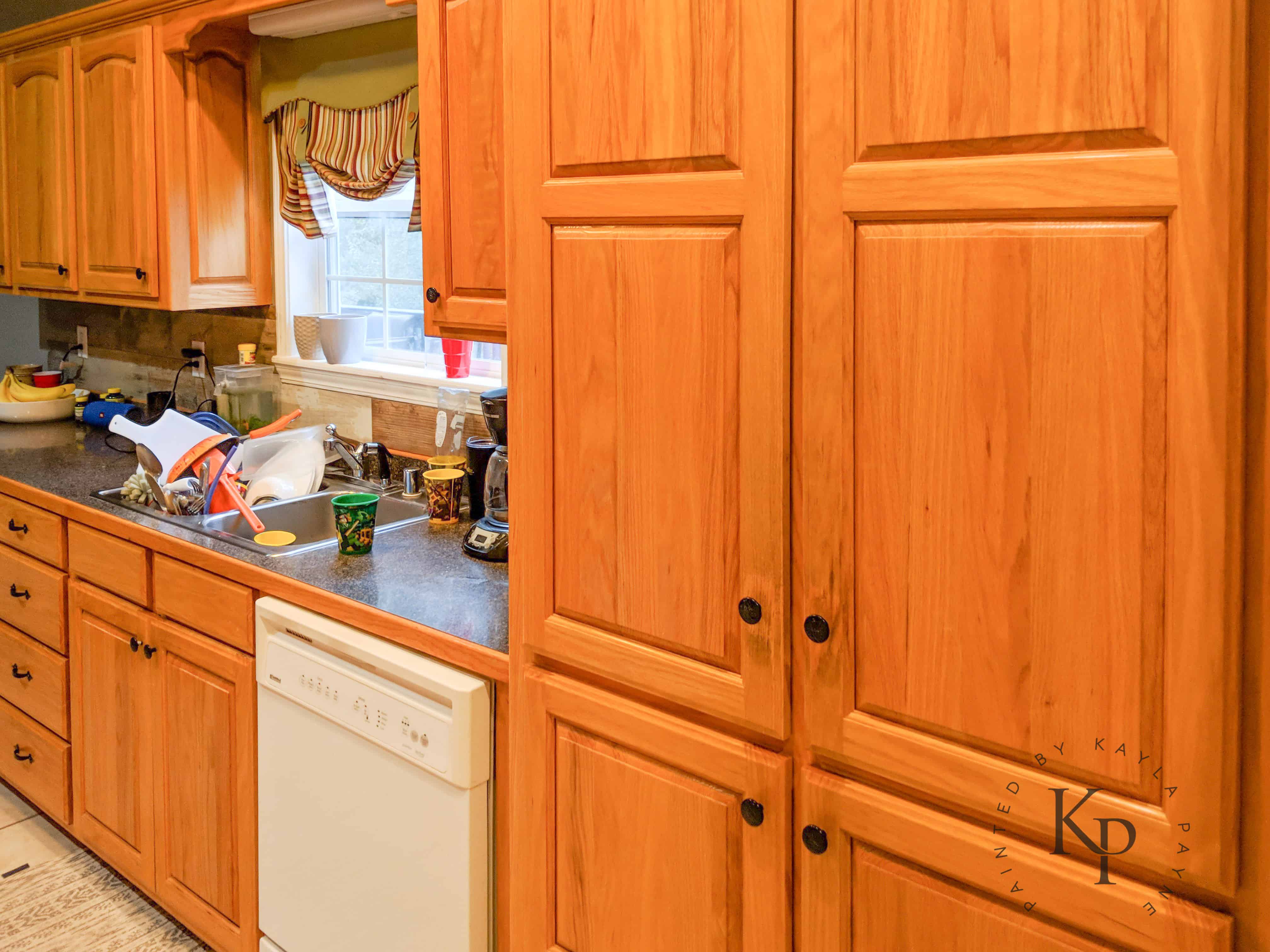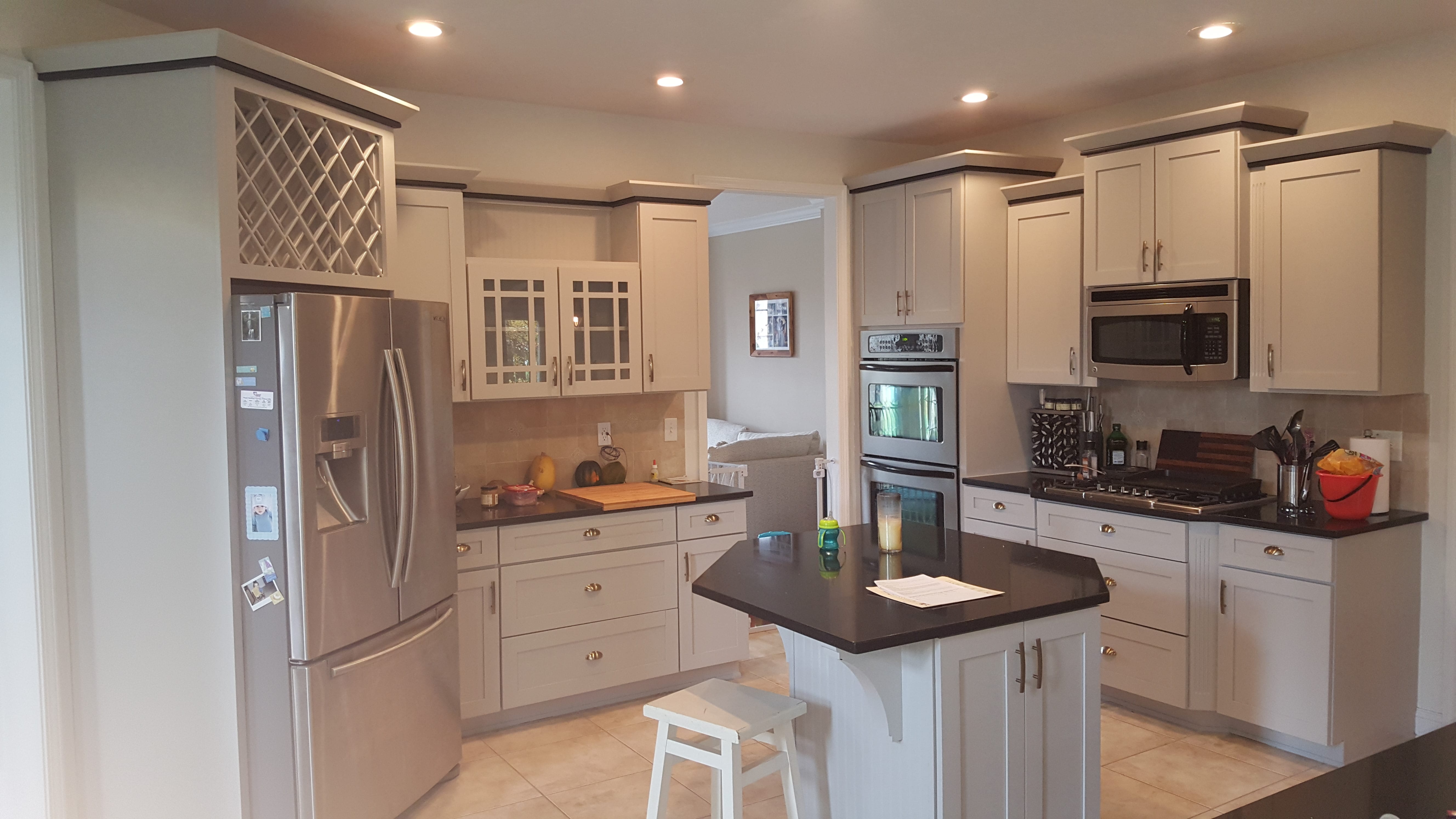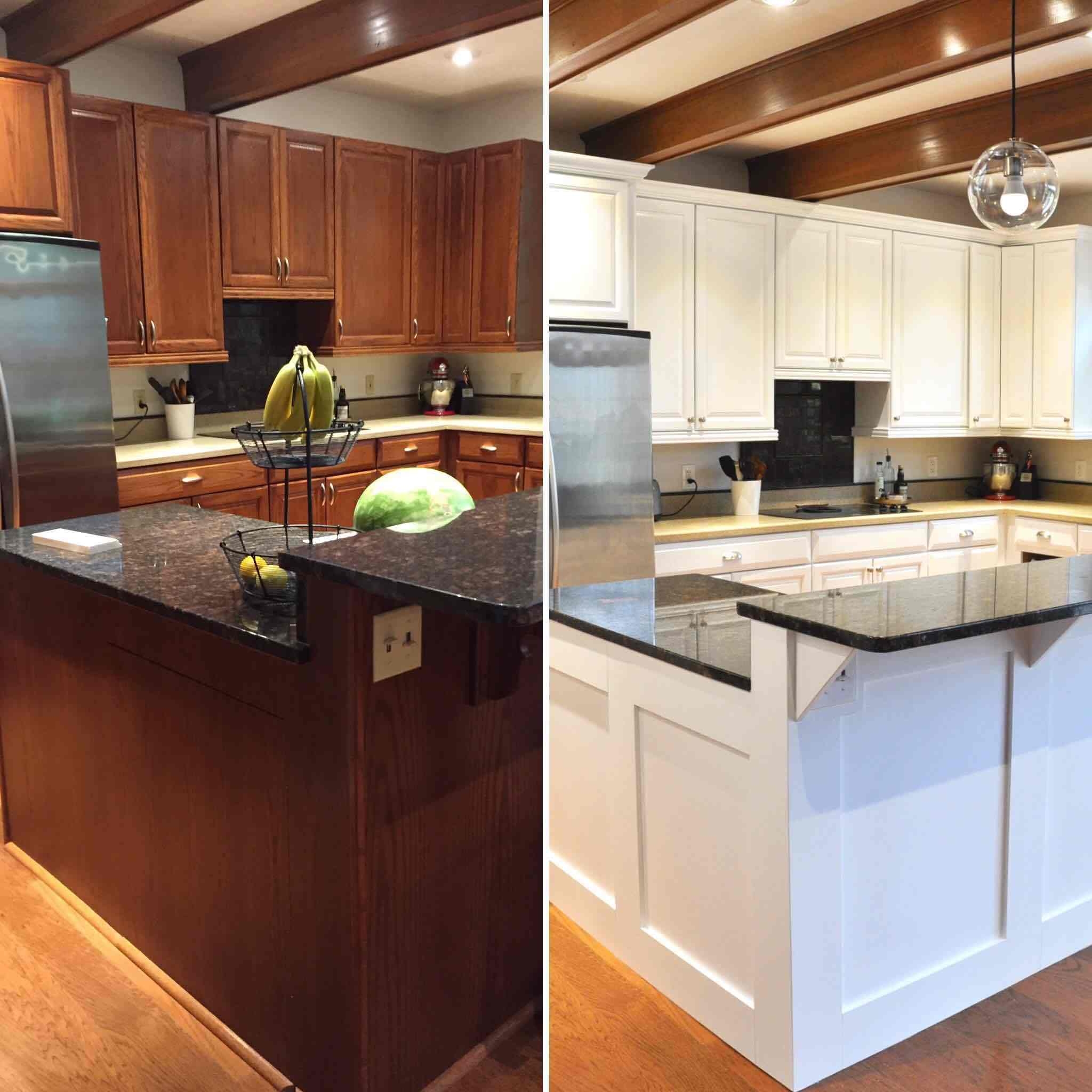Reasons to Paint Kitchen Cabinets

Painting kitchen cabinets is a popular and cost-effective way to transform the look and feel of your kitchen. It offers a multitude of benefits, ranging from enhancing aesthetics to improving functionality and increasing the overall value of your home.
Aesthetic Enhancement
Painting your kitchen cabinets can dramatically change the look and feel of your kitchen, allowing you to create a space that reflects your personal style and preferences. You can choose from a wide array of colors and finishes to achieve the desired ambiance. For example, painting cabinets a bright white can create a clean and modern look, while a warm, earthy tone can add a touch of rustic charm.
Functionality Improvements
Painting cabinets can also improve their functionality. For instance, painting outdated cabinets in a lighter color can make them appear larger and brighter, especially in smaller kitchens. Additionally, painting cabinets with a high-gloss finish can create a more reflective surface, making the kitchen appear more spacious.
Cost-Effectiveness
Painting cabinets is a significantly more affordable option compared to replacing them entirely. You can achieve a complete kitchen makeover for a fraction of the cost of new cabinets. The cost of painting materials and labor is typically much lower than the price of purchasing and installing new cabinets.
Real-Life Examples
Numerous examples showcase the transformative power of painting kitchen cabinets. A recent study by the National Association of Realtors found that kitchens with painted cabinets sold for an average of 5% more than similar homes with outdated cabinets. This illustrates the significant return on investment that painting can provide.
Refreshing Outdated Cabinets
Painting is an effective way to refresh outdated cabinets and give them a modern look. Outdated cabinets often have a dated color or finish that can make the entire kitchen feel old and tired. Painting them in a fresh, contemporary color can instantly update the look of the kitchen, creating a more modern and inviting space.
Enhancing Overall Appeal and Value
Painting kitchen cabinets can enhance the overall appeal and value of your home. A well-painted kitchen can create a more inviting and enjoyable space for both residents and potential buyers. This can significantly increase the perceived value of your home, making it more appealing to potential buyers and potentially leading to a higher selling price.
Factors to Consider Before Painting: Should I Paint My Wood Kitchen Cabinets

Before embarking on the transformative journey of painting your kitchen cabinets, it is crucial to assess the current condition of your cabinets and carefully consider the factors that will influence the success of your project.
Assessing Cabinet Condition
The condition of your cabinets will determine the level of preparation required before painting. A thorough inspection will reveal any issues that need to be addressed. For example, if the cabinets are severely damaged or warped, painting may not be the best solution.
- Wood Type: The type of wood used for your cabinets will influence the paint adhesion and the overall outcome. Softwoods like pine are more porous and may require more coats of primer and paint, while hardwoods like oak or maple are denser and may require less preparation.
- Finish: The existing finish on your cabinets will impact the paint application. If the finish is glossy or sealed, it will need to be sanded or cleaned to create a rough surface for the paint to adhere to.
- Damage: Inspect the cabinets for any damage, such as scratches, dents, or chips. These imperfections should be repaired before painting to ensure a smooth and even finish.
- Hardware: Consider the condition of your cabinet hardware. If the hardware is outdated or damaged, you may want to replace it before painting.
Paint Selection and Preparation Techniques, Should i paint my wood kitchen cabinets
Choosing the right paint and using appropriate preparation techniques are essential for a successful painting project. The type of paint you choose will depend on the material of your cabinets and the desired finish.
- Oil-Based Paint: Oil-based paints are durable and provide a high-gloss finish. They are ideal for cabinets that receive heavy wear and tear, but they require more preparation and can be difficult to clean up.
- Latex Paint: Latex paints are water-based and offer a wide range of colors and finishes. They are easier to clean up and dry faster than oil-based paints. However, they may not be as durable as oil-based paints.
- Epoxy Paint: Epoxy paints are extremely durable and resistant to moisture and chemicals. They are often used for kitchen cabinets because they can withstand the harsh conditions of a kitchen environment.
Essential Tools and Materials
Before you begin painting, gather all the necessary tools and materials to ensure a smooth and efficient process.
- Paint: Choose the appropriate paint type and color based on your cabinet material and desired finish.
- Primer: Primer is essential for creating a smooth and even surface for the paint to adhere to. Select a primer that is compatible with the type of paint you are using.
- Paint Brushes: Use high-quality paint brushes that are appropriate for the type of paint you are using.
- Paint Roller: A paint roller is useful for covering large areas quickly and efficiently. Choose a roller with a nap length that is suitable for the surface you are painting.
- Sandpaper: Sandpaper is used to smooth out imperfections and create a rough surface for the paint to adhere to. Use different grit sandpaper for different stages of preparation.
- Cleaning Supplies: You will need cleaning supplies, such as a cleaning solution, rags, and a vacuum cleaner, to clean the cabinets before painting.
- Drop Cloths: Protect your floors and surrounding areas from paint spills and drips.
- Painter’s Tape: Use painter’s tape to mask off areas that you don’t want to paint.
- Safety Gear: Wear appropriate safety gear, such as gloves, a mask, and eye protection, to protect yourself from paint fumes and dust.
Preparing Cabinets for Painting
Proper preparation is essential for a successful painting project. This involves cleaning, sanding, and priming the cabinets to ensure that the paint adheres properly and provides a long-lasting finish.
- Clean the Cabinets: Thoroughly clean the cabinets with a cleaning solution and a soft cloth to remove dirt, grease, and grime. Pay attention to the corners and crevices where dust and debris can accumulate.
- Remove Hardware: Remove all hardware, such as knobs, pulls, and hinges. This will allow you to paint the cabinets evenly and avoid getting paint on the hardware.
- Sand the Cabinets: Sand the cabinets using sandpaper to smooth out imperfections and create a rough surface for the paint to adhere to. Start with a coarse grit sandpaper and gradually move to a finer grit sandpaper for a smooth finish.
- Prime the Cabinets: Apply a primer to the cabinets using a brush or roller. Primer creates a barrier between the existing finish and the paint, ensuring that the paint adheres properly and provides a long-lasting finish.
Painting Techniques and Styles

The way you apply paint to your kitchen cabinets significantly impacts their final look and feel. From the type of finish you choose to the technique you employ, various options exist to achieve your desired aesthetic.
Paint Finishes
Understanding the differences between various paint finishes is crucial for making informed decisions. Each finish possesses unique characteristics that affect its durability, ease of cleaning, and overall appearance.
- Matte: Matte finishes provide a flat, non-reflective surface, ideal for hiding imperfections. They offer a classic, timeless look and can be excellent for creating a cozy, relaxed atmosphere. However, they are less durable than other finishes and may show fingerprints and smudges more easily.
- Satin: Satin finishes provide a soft sheen with a slightly reflective surface. They offer a balance between durability and a subtle elegance, making them popular for kitchens. They are easier to clean than matte finishes and resist stains better.
- Semi-gloss: Semi-gloss finishes have a noticeable shine and are more durable than matte or satin finishes. They are highly resistant to moisture, making them suitable for high-traffic areas like kitchens. Their reflective nature can create a brighter and more spacious feel.
- Gloss: Gloss finishes offer the highest level of shine and are the most durable. They are incredibly easy to clean and resistant to scratches and stains. While they can make a space feel larger and brighter, they may highlight imperfections more readily.
| Paint Finish | Durability | Cleaning | Aesthetics |
|---|---|---|---|
| Matte | Low | Difficult | Flat, non-reflective, classic |
| Satin | Medium | Easy | Soft sheen, elegant |
| Semi-gloss | High | Very easy | Noticeable shine, durable |
| Gloss | Highest | Easiest | High shine, reflective, modern |
Painting Techniques
The application technique you choose plays a vital role in the final outcome of your painted cabinets. Different methods offer distinct advantages and are best suited for specific situations.
- Brushwork: Brushwork offers meticulous control and precision, ideal for intricate details and achieving a textured, rustic look. It’s particularly suitable for smaller areas and corners where a roller may not reach.
- Rolling: Rolling provides a smooth, even finish and is efficient for covering large surfaces. It’s best suited for flat areas and requires a steady hand to avoid leaving streaks or roller marks.
- Spraying: Spraying offers the fastest and most consistent application, resulting in a smooth, even finish. It’s ideal for large projects and achieving a professional-looking result. However, it requires careful preparation and proper ventilation.
Cabinet Painting Styles
Beyond the choice of paint finish and application technique, various painting styles can further enhance your kitchen cabinets’ aesthetic appeal.
- Two-tone: Two-tone painting involves using two different colors for your cabinets, often combining a lighter shade for the upper cabinets and a darker shade for the lower cabinets. This creates visual interest and adds depth to the space. For example, you could paint the upper cabinets a soft white and the lower cabinets a warm gray.
- Distressed: Distressed painting involves creating a worn, antique look by sanding or distressing the paint after it has dried. This technique adds a touch of rustic charm and can be achieved with various techniques, such as using sandpaper or a wire brush.
- High-gloss: High-gloss painting uses a gloss finish to create a sleek, modern look. This style is perfect for contemporary kitchens and can make the space feel larger and brighter.
Should i paint my wood kitchen cabinets – Deciding whether to paint your wood kitchen cabinets is a big decision, and like choosing the right theme for a kids car themed bedroom , it depends on your personal style and desired outcome. If you’re going for a fresh, modern look, a coat of paint can do wonders, but if you appreciate the warmth and character of natural wood, perhaps refinishing is a better option.
Painting your wood kitchen cabinets can be a great way to refresh your space and give it a new look. If you’re considering a move, you might want to check out one bedroom apartments in Bristol, TN , as a fresh start could inspire you to tackle a kitchen makeover.
But even if you’re staying put, a coat of paint can do wonders for your cabinets, making them look modern and updated.
